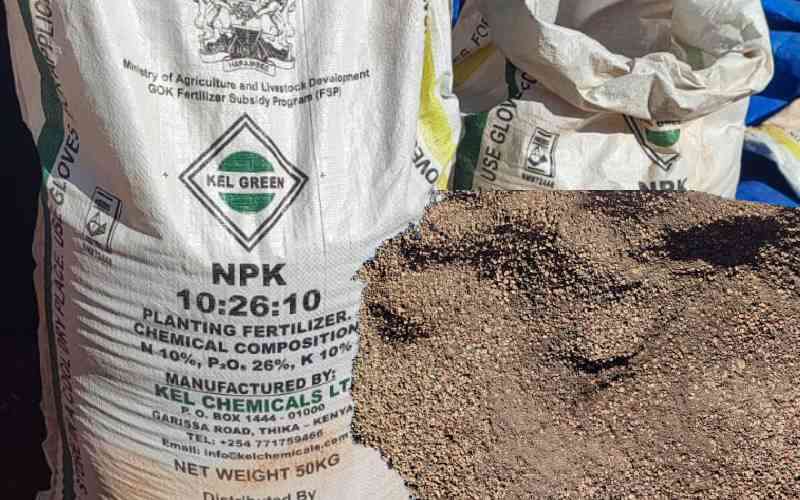I will not bore my readers with figures regarding how much was allocated to food production and where in the current budget. Quite often this does not make any sense to a reader who has no access to the whole budget, has no notion what those figures mean and will, in the final analysis, keep on going to the market buying the same food at the same price (or even more) and life continues.
What I am going to do today is to seek to establish the kind of problems the budget should have solved if we are really concerned about ensuring that more Kenyans have access to affordable and nutritious food from now on. The budget should then allow us to begin seriously implementing Article 43 in our Constitution which says:
“(1) Every person has the right-
(a) to the highest attainable standard of health, which includes to healthcare services, including reproductive health;
(b) to accessible and adequate housing, and to reasonable standards of sanitation;
(c) to be free from hunger, and to have adequate food of acceptable quality;
(d) to clean and safe water in adequate quantities;
(e) to social security; and
(f) to education.”
These are rights, and not privileges, and they are clearly stated in the fundamental law of the land: and that is the Constitution. Any government from now on must reflect on what it does with the view of how it promotes, or helps the people seek to attain, these rights. The Constitution was not written for cosmetic reasons: it is meant to guide the way public resources are used, how Kenyans organise their lives and how they improve the way they live.
The Jubilee Government happens to be the first government to have the responsibility of governing under this Constitution: it must lay a proper foundation for constitutional governance for our nation. This begins with how it seeks to meet these basic needs of Kenyans. I will concentrate on the issue of being “free from hunger, and having adequate food of acceptable quality.”
First, before we begin saying how we will make sure that Kenyans are free from hunger, do we know how many Kenyans go hungry every day? What is the geography of hunger in our nation? What is the gender of hunger in Kenya today? What is the “age-group” of hunger among our people? If at all the budget addresses itself to the goal of “making hunger history by 2030”, has it posed these questions and come up with a “budgetary road map” of progressively seeking to achieve that goal within the next three years?
Second, to what extent do Kenyans have “adequate food of acceptable quality” if at all they have access to food in the first place? This is an extremely weighty question which requires having a proper food policy in our country, further entailing looking afresh at what we assume to be our “staple diet”, especially with regard to “marketed food” and not food consumed from subsistence agriculture. We now know that highly processed foods are dangerous to our health; it does not matter whether we are poor or rich. We also know that consuming too much sugar is equally dangerous.
A high consumption of both may easily explain the growing incidences of cancer and diabetes in our population, covering all gender, regions, age groups and income groups. So it is an issue that must urgently be addressed in public policy as well as be influenced by budgetary allocation if we are to control the spread of these diseases as well as their cost implications in our health budgets. Does this budget take cognizance of this issue?
Maize, wheat, rice, beans, green vegetables and meat are key in our staple diet. The adequacy of access to these foods, as well as their quality, depend very much on income groups and geographical location to sources of food production. There are certain regions of Kenya which, by their very geography, have deficits of certain foods, or where access to the food may mean a higher outlay of one’s income.
Stay informed. Subscribe to our newsletter
Furthermore, we have a major problem regarding the cost of factor inputs in food production. Commercial maize growers are almost giving up that enterprise due to high cost of inputs. At the consumption level, the quality of these foods depend on the extent to which they are processed, and hence dangerous to human consumption even if, by being processed, they are more affordable!
I would have wanted to see some incentives given to research into nutritious and affordable staple diets and production and marketing of affordable organic foods. In the western world access to organic food is the preserve of the middle class and above. There are special super markets for organic food and the food costs a bomb.
ere in Kenya we know that we have traditional vegetables which are healthy and nutritious but are not produced in large enough quantities to be widely marketed. Encouraging the production and marketing of these foods would be an important step towards realising the need to nurture a healthy and productive population.
Thirdly, the marketing of food requires infrastructure, pricing and standardisation; these are largely functions of the national government. If the price of fuel goes up be sure the cost of food will also go up. If the tax levied on transportation equipment such as lorries goes up that will mean marketed foods will likewise cost more.
If the government increases Value Added Tax on food or on food processing equipment the cost of food will go up as well. If the income of people does not go up, or even goes further down, increase in food prices will no doubt engender more hunger or reduced access to affordable food. In certain societies any slight attempt to increase the prices of basic food commodities quite often leads to riots and violent demonstrations. Kenyans seem to be an exception to this rule for reasons I have never quite understood.
Finally, food production and the related issues regarding water and land are now fully in the hands of county governments in line with Schedule 4 of the Constitution. The national government should handle national policy making, standardisation, research, infrastructure development and taxation. Whatever resources available at the national level for food production should be taken to counties as conditional grants.
Likewise, since water production is so critical to food production, giving such a responsibility to the National Youth Service is counterproductive.
The county governments should be fully in charge of availability of adequate water for home consumption and agricultural production through irrigation. If the national government wanted counties to have the services of the NYS in any area, this should be done on a need basis; as the need arises and on demand.
The NYS should be used on a “pull” basis and not on a “push” basis by the counties. The NYS should be a training ground where the youth acquire certain skills and trades useful to them upon graduation. Then counties will no doubt recruit from the NYS.
 The Standard Group Plc is a
multi-media organization with investments in media platforms spanning newspaper
print operations, television, radio broadcasting, digital and online services. The
Standard Group is recognized as a leading multi-media house in Kenya with a key
influence in matters of national and international interest.
The Standard Group Plc is a
multi-media organization with investments in media platforms spanning newspaper
print operations, television, radio broadcasting, digital and online services. The
Standard Group is recognized as a leading multi-media house in Kenya with a key
influence in matters of national and international interest.
 The Standard Group Plc is a
multi-media organization with investments in media platforms spanning newspaper
print operations, television, radio broadcasting, digital and online services. The
Standard Group is recognized as a leading multi-media house in Kenya with a key
influence in matters of national and international interest.
The Standard Group Plc is a
multi-media organization with investments in media platforms spanning newspaper
print operations, television, radio broadcasting, digital and online services. The
Standard Group is recognized as a leading multi-media house in Kenya with a key
influence in matters of national and international interest.








